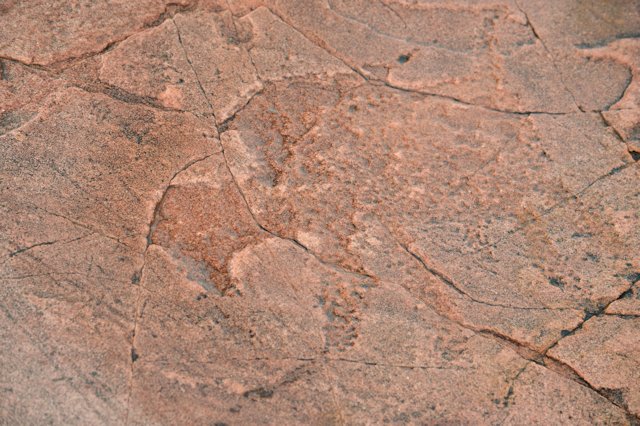In southwest Minnesota the prairies that cover much of the central U.S. start. Among the prairie grasses of this area there are outcroppings of a pinkish rock. Only the very tops of the rocks show, so the outcroppings are mostly flat rocks. There are outcroppings along a ridge for several miles, but in one area about 14 miles southwest of Springfield there is a large flat outcropping with native American petroglyphs that are carved or chipped into the rock.
About 100 years ago the land was owned by the Jeffers family. They were aware that there were some petroglyphs on the rock in their cattle field, and at some point they donated the land to the Minnesota Historical Society.
The MHS has protected the rockface and also the prairielands on the 120 acres surrounding the rock that they now own. They have re-naturalized the prairie and have identified over 130 types of plants on the land.
About 10 years ago they had a project to remove lichen from the rockface, and as they did this project they discovered that there are many, many more petroglyphs than previously thought. There are approximately 5,000 carvings on the area that they have removed lichen from. They also dug under the thin layer of soil in a small part of the rockface and found that it also contains more carvings, so it’s unknown how many there may actually be.
The carvings are not easy to see. They are simply very shallow chiselled areas of the rockface to depict animals, people, and other symbols that were important to the peope living here through the past 10,000-13,000 years. This is much, much older than any of the dwellings or petroglyphs we saw last summer in the southwest!
Native American people still cover to the rockface and consider it sacred. There are small sections where visitors can walk on the rockface; they are roped off so people don’t walk all over it and mess up the carvings or show disrespect for this sacred place. Tour guides do walk off the roped area, but they remove their shoes and walk in socks or barefoot.
While you can walk the area without a tour guide, I’m glad we did have a tour guide because the carvings are not easy to see. He knew where several were and had a spray bottle of distilled water to wet the carvings which made them easier to see.
Here are some pictures we took:

